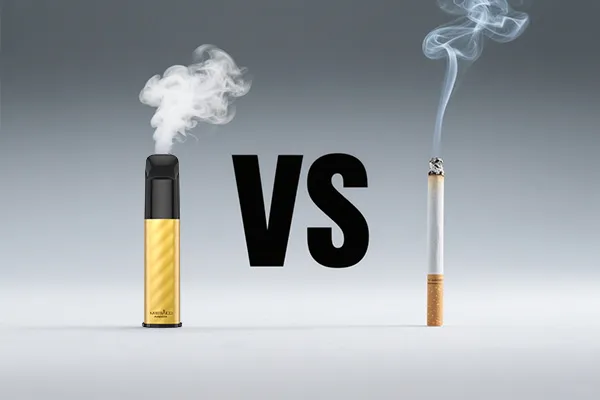You can master the latest information, new product , exhibition, promotion, etc
From the sacred pipe ceremonies of Indigenous communities in North America to the communal shisha gatherings in Middle Eastern cafes, tobacco has been more than a habit—it is a cultural cornerstone, weaving rituals, hospitality, and identity into the fabric of societies worldwide. Yet today, this age-old relationship is being redefined by a modern innovation: the e-cigarette. Invented in 2003 by Chinese pharmacist Hon Lik and popularized globally since 2004, e-cigarettes use battery-powered atomizers to vaporize nicotine-infused liquids, offering an alternative to combustion-based tobacco products. As technology disrupts tradition, the question emerges: How can we honor tobacco’s cultural legacy while embracing innovations that promise harm reduction?
1. Traditional Tobacco: A Tapestry of Cultural Significance
Tobacco’s cultural roots are as diverse as the communities that cherish it. For Indigenous peoples across continents, tobacco is a sacred medium for spiritual connection. In North America, the calumet (peace pipe) ceremony symbolizes unity and respect, with protocols passed down through generations to honor ancestors and seal agreements. Similarly, in Australia, tobacco features in "songlines"—oral traditions that map the land and its stories.
In the Middle East and North Africa, shisha (hookah) transcends mere consumption. Families and friends gather around ornate water pipes, sharing flavored tobacco as a gesture of hospitality and community. This practice, dating back centuries, transforms smoking into a social ritual where conversation flows as freely as the smoke itself.
In East Asia, tobacco carries etiquette weight. In China, offering a cigarette or pipe during business meetings or festivals signifies respect, embedding tobacco use into social hierarchies and relationship-building. These practices are not habits but living expressions of heritage, demanding preservation and respect.
2. The Rise of E-Cigarettes: Technology Reshaping Consumption
E-cigarettes represent a paradigm shift in nicotine delivery. Unlike traditional tobacco, which produces toxic tar and carbon monoxide through combustion, e-cigarettes heat a liquid (containing nicotine, flavorings, and additives) into an aerosol, eliminating harmful byproducts associated with burning tobacco. This innovation has driven exponential market growth: global e-cigarette retail sales reached $36.3 billion in 2020, with the U.S., UK, and Russia leading consumption. By 2025, the market is projected to expand further, fueled by advancements like nicotine salt technology—a breakthrough by Dr. Chenyue Xing that enhanced absorption efficiency and user satisfaction, converting 30% of U.S. smokers to vapers.
China, as the world’s manufacturing hub, produces 90% of global e-cigarettes, with Shenzhen dominating 90% of production. From first-generation cigarette mimics to third-generation disposable pods, technological evolution has focused on improving user experience, with ceramic atomizers now standard for consistent vaporization.

3. Clash and Convergence: Tradition Meets Innovation
The intersection of e-cigarettes and traditional tobacco is marked by both tension and opportunity. Critics argue that vaping erodes cultural rituals: the meticulous preparation of shisha coals or the sacredness of Indigenous pipe ceremonies loses meaning when replaced by disposable vape pens. Health concerns amplify this divide. While public health bodies like Public Health England note e-cigarettes are 95% less harmful than cigarettes, studies link unregulated products to lung injuries, particularly among youth using THC-infused liquids.
Yet innovation also offers avenues for cultural preservation. Forward-thinking brands now blend tradition with technology: e-liquids flavored with matcha (Japan), mint tea (North Africa), or ginseng (China) honor local tastes. Electronic hookahs preserve communal vaping rituals without smoke or ash, while Indigenous-owned vape companies incorporate cultural narratives into branding, ensuring heritage guides innovation rather than opposing it.
4. Navigating Balance: Regulation, Respect, and Responsibility
Global regulatory approaches reflect the tension between innovation and tradition. While Mexico and Macau ban e-cigarettes outright, the EU’s Tobacco Products Directive balances oversight with cultural exceptions, exempting traditional shisha lounges in some states. The U.S. focuses on youth protection, restricting flavors appealing to minors, while China’s 2022 mandatory standards regulate product safety without stifling its manufacturing prowess.
For businesses, success lies in ethical adaptation:
Cultural Collaboration: Partner with communities to avoid appropriating symbols—e.g., consulting Indigenous leaders on product design.
Education: Clarify that e-cigarettes are alternatives for adult smokers, not replacements for cultural rituals.
Compliance: Adhere to regional laws, from ingredient labeling in Europe to sales restrictions in Asia.
5. The Future: Coexistence as a Cultural Value
Tradition and innovation need not be adversaries. Just as tobacco evolved from pipes to cigarettes, e-cigarettes offer a path to reduce harm while honoring heritage. By centering cultural respect in technology, regulating responsibly, and fostering dialogue, we can create a future where a Bedouin sharing shisha and a Londoner using a vape pen both engage in practices that reflect their identities—rooted in tradition, enhanced by progress.
In this balance lies the true innovation: not replacing the past, but letting it inspire a healthier, more connected future.









